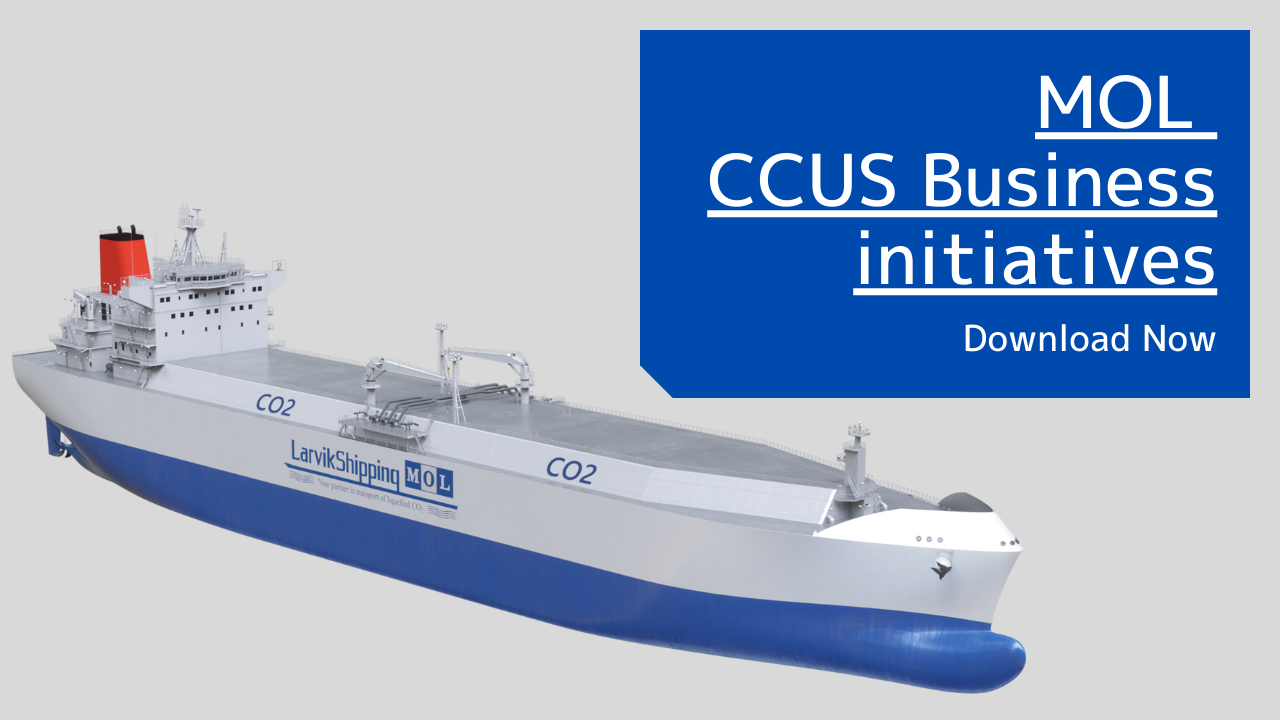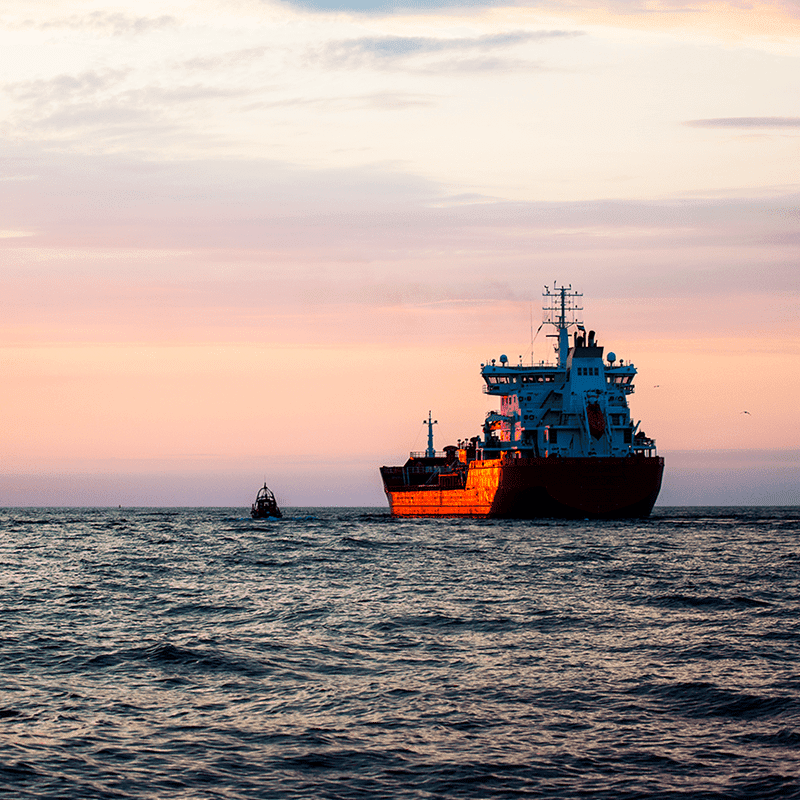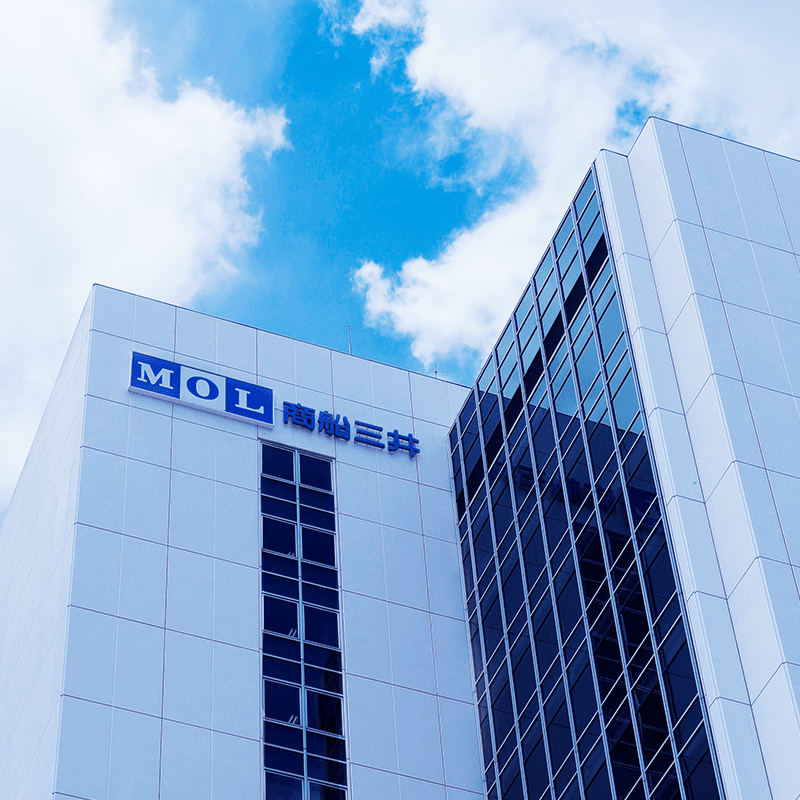BLOG
What is CCUS and how is it expected to be Carbon Neutral? (2)
- Eco Friendly
2022.03.08
Various efforts are being made worldwide to achieve Carbon Neutral society. In this blog, one of them, CCUS (Carbon Capture, Utilization and Storage), which is drawing attention as one of the methods, is introduced in two parts.
In this, the second part of the blog “What is CCUS and how is it expected to be Carbon Neutral?”, we will focus on the global status of CCUS, Carbon recycling, and the liquefied CO2 transportation service at sea.
Click here for the first part of this blog
Global status of CCUS
According to Global CCS Institute (GCCSI), as of September 2021, there are 135 CCUS projects worldwide, 27 of which are already in operation. 71 new projects were launched in the first 9 months of 2021. Looking at each region, 36 projects have been launched in the United States, 8 in the UK, 5 in the Netherlands, and 4 in Belgium.
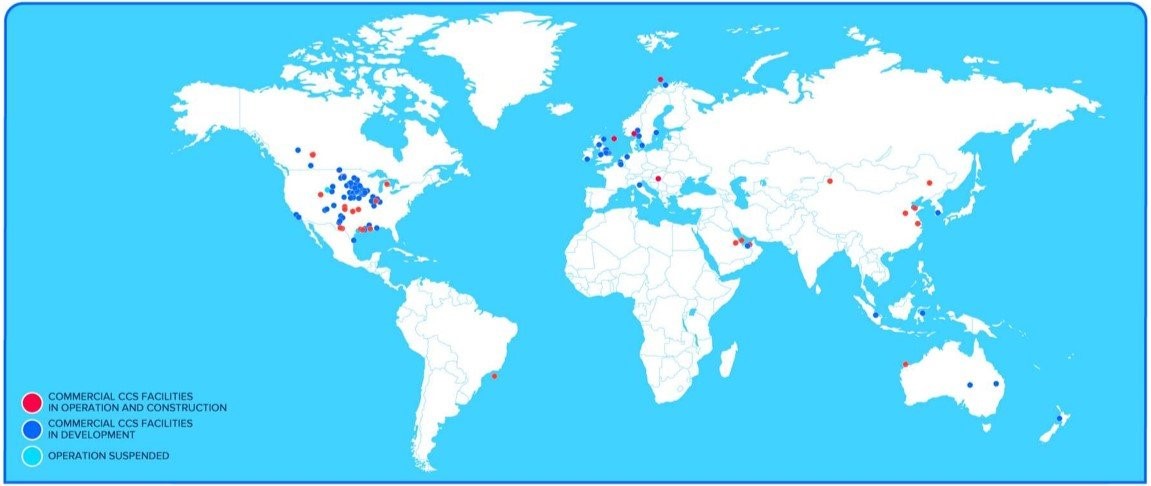
GLOBAL CCS FACILITIES
Of the new CCUS projects being developed, the Rotterdam Hydrogen Project, led by Shell, is expected to develop a CCS facility with 1 million ton of capacity. Meanwhile, the Norcem Brevik project, which has recently been approved for funding by the Norwegian government, will take on the challenge of CCS in the new field of cement production processes.
While many projects in North America and Europe taking the lead, the number of projects in East Asia and the Middle East is also on a rise and is expected to be accelerated. Let's look at the situation in each region.
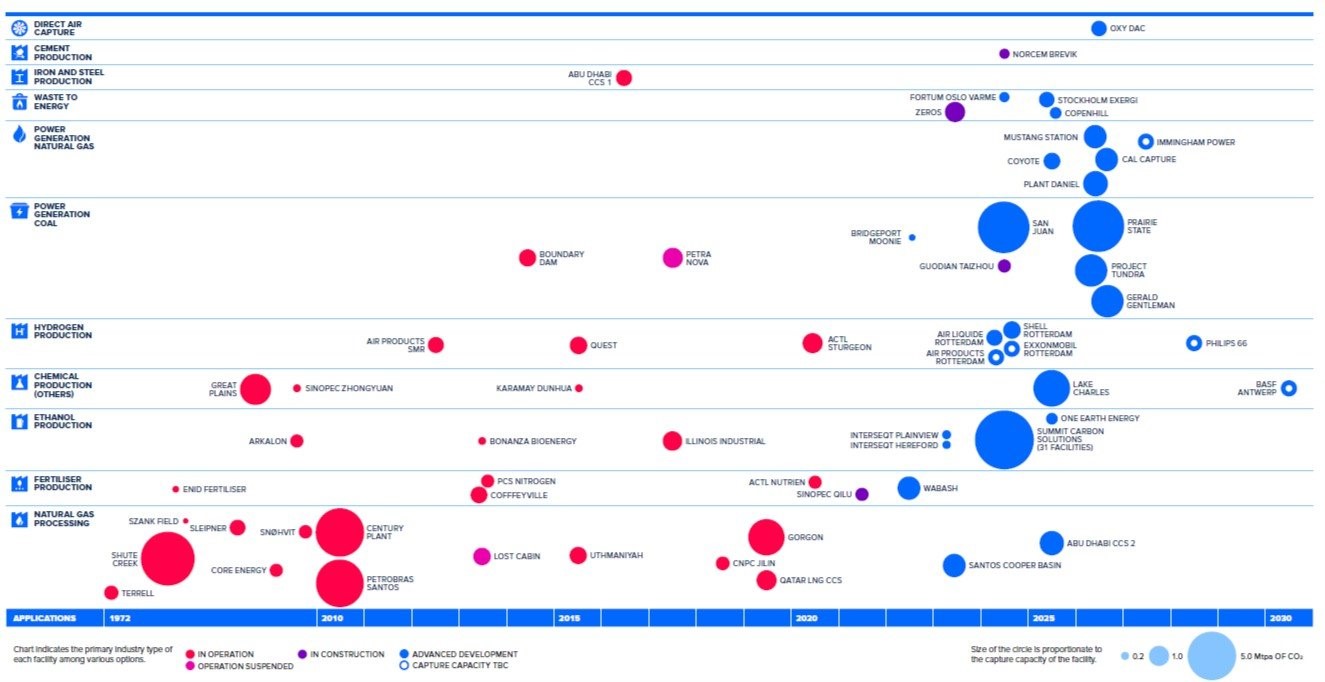
CCS PROJECTS BY SECTOR AND SCALE (BY CO2 CAPTURE CAPACITY) OVER TIME
Source: GCCSI "Global Status of CCS 2021"
①Europe
European Union (EU) has announced “the European Green Deal”, which calls for achieving climate neutrality by 2050, and has committed under the Paris Agreement to reduce greenhouse gas emission by 55% from 1990 levels by 2030 as a step toward achieving this target. There is growing awareness of CCS as a GHG reduction policy to meet its long-term climate deal, with 35 projects currently in the development phase in Europe. The development of new projects is driven by the evolution of business models and the availability of public subsidies.
Previously, CCS cost per emitting facility was higher and each partner was responsible for their own part (each part of capture, transport, and storage), that led to little incentive to invest in the projects. On the other hand, new projects have an advanced business model that secures considerable amount of CO2 by forming CO2 clusters (*) by industrial collaboration, and shares any risks associated with infrastructure with all parties involved, including third parties.
In terms of public subsidies, EU has announced the launch of “EU Innovation Fund”. In November 2021 EU selected 7 low-carbon and decarbonization projects which will receive total €1.1 billion funding, and 4 of those are related to CCS/CCUS. EU has also announced that it will allocate total €25 billion by 2030, that leads to accelerate many CCS project to receive grants.
The combination of these two factors, advanced business model and public assistance, promotes launching new CCS projects in regions such as Italy, Denmark, and Sweden, in 2020, as well as Norway, the Netherlands and the UK, which have led the CCS in Europe.
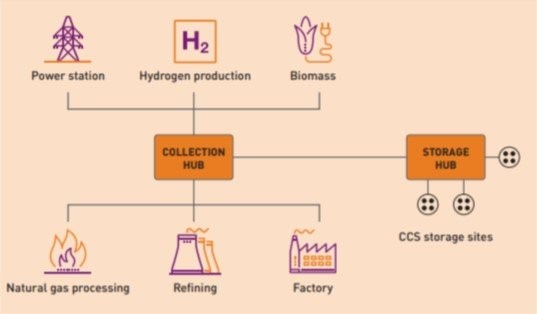
Source: IOGP "Scaling up CCS in EUROPE"
(*) Potential CO2 clusters in Europe include Teesside (the UK), Rotterdam (the Netherlands), Antwerp (Belgium), Copenhagen (Denmark) and Dunkerque (France).
②The United States
In North America, about 5,150 miles (8,300 kilometers) of CO2 pipelines, the largest in the world, have already been installed around the Permian Basin oil fields in western Texas. Around there, a technology called “CO2-EOR”, which enhanced oil recovery by injecting CO2 into existing wells and reservoirs, has been well-practiced. In addition, more than 40 new CCS projects have been announced since 2020. This is mainly due to the fact the United States officially rejoined the Paris Agreement and strengthened its climate change policy, as well as following the expansion of “45Q”, the tax credit for carbon sequestration.
These policy factors and global concern for decarbonization encourage investment in CCS. On the other hand, there is a notable example which shows the importance of economic efficiency and certain volume of CO2 for a CCUS project to be successful. Petra Nova project was once the world's largest CCS project. It captured CO2 from a coal-fired power plant in Texas and utilized it for CO2-EOR. However, it ceased its operations in May 2020 due to downfall in crude oil prices. This shows it needs to be economically viable while securing the certain volume of CO2. Therefore, it is important to renovate existing power plants and factories in a cost-competitive method and operate them while recovering investment.
(Reference) Financial Times, GCCSI "GLOBAL STATUS OF CCS 2020 and 2021
③Asia and Oceania
Although their investments in CCUS fall behind that in Europe and the United States, positive progress has been made over the past year, with the first commercial CCS projects announced in Indonesia and Malaysia. Economic systems are also being developed. In Australia, the government made policy decisions that adding CCS to the Emissions Reduction Fund (ERF), which is the first financial incentive system for CCS in the Asia-Pacific region. China has also launched an emissions trading scheme for 2,225 power plants, which will trade more than 4 billion tons of carbon dioxide annually.
Japan played a leading role in the launch of “the Asia CCUS Network” (*), and Japanese research institutions and companies are expected to have a strong presence in the CCUS market in Asia.
(*) At “East Asia Summit (EAS)” energy ministers meeting held in November 2020, the Asia CCUS Network was established at the initiative of Japan, with the aim of improving the environment for the use of CCUS across the region and sharing knowledge
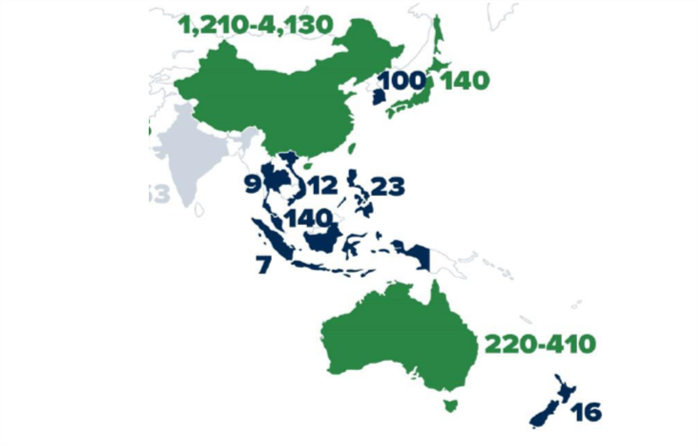
Asia's CO2 storage potential in 1 billion ton of CO2
Source: Global CCS Institute
Subsequent surveys have suggested there is a CO2 storage potential of about 150 - 240 billion tons in Japan.
What is Carbon Recycling?
Common uses of CO2 are in welding and making dry ice. The shipment volume of liquefied CO2 (including dry ice) from factories in Japan (JIMGA statistics) was 675,000 tons in 2020 (April 2020 to March 2021), of which dry ice accounted for just over 288,000 tons. A breakdown in usage is shown in the figure below.

Data sources: JIMGA statistics (2020) created by Mitsui O.S.K. Lines
The largest share of CO2 usage is for industrial application. It is used in “CO2 arc welding” for shipbuilding, welding bridges and towers. CO2 is also used for carbonated drinks and dry ice. Dry ice is sometimes used for cleaning purposes known as shot blasting. Liquefied carbon dioxide is also used as a fertilizer to accelerate the growth of plants.
However, these methods alone limit the amount of CO2 that can be used after capture, so various efforts are being made to further promote the use of CO2.
In Iceland, for example, a technology has been developed to produce 4,000 tons of methanol in a year using CO2 captured from geothermal power generation and hydrogen produced by the electrolysis of water. In Norway a technology has been developed to produce Carbon Nanotubes by using carbon separated from captured CO2.
In Japan, the Agency for Natural Resources and Energy has published a roadmap to accelerate innovation in carbon recycling:
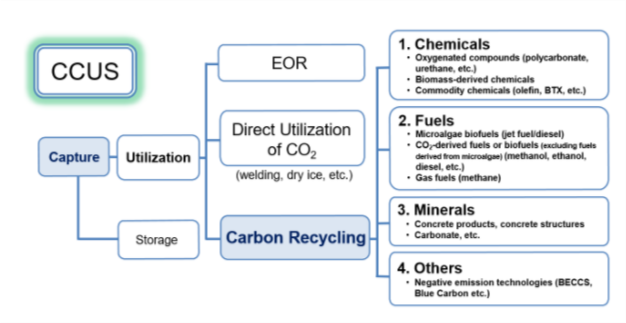
Roadmap from the Agency for Natural Resources and Energy
Carbon recycling is broadly divided into three categories: chemicals, fuels, and minerals. For example, polycarbonates, which has excellent processability and impact resistance are used in the iPhone. Other examples are biofuels, concrete products, and materials used in the process of concrete production.
Aiming to offer comprehensive CCUS services
In March 2021, MOL invested in Larvik Shipping (LS), a Norwegian company that has been managing liquefied CO2 ships for more than 30 years and entered the liquefied CO2 ocean transport business. Combining our company's accumulated expertise and technological capabilities in safe operation with LS’s know-how and knowledge and solid experience, we will work to provide the optimal liquefied CO2 transport services for each CCS/CCUS project.
We do recognize that the liquefied CO2 ocean transportation alone will not solve the problem of reducing CO2 emissions. Therefore, we aim to offer comprehensive CCUS services through collaboration with partners, and further effective utilization methods, and carbon recycling.
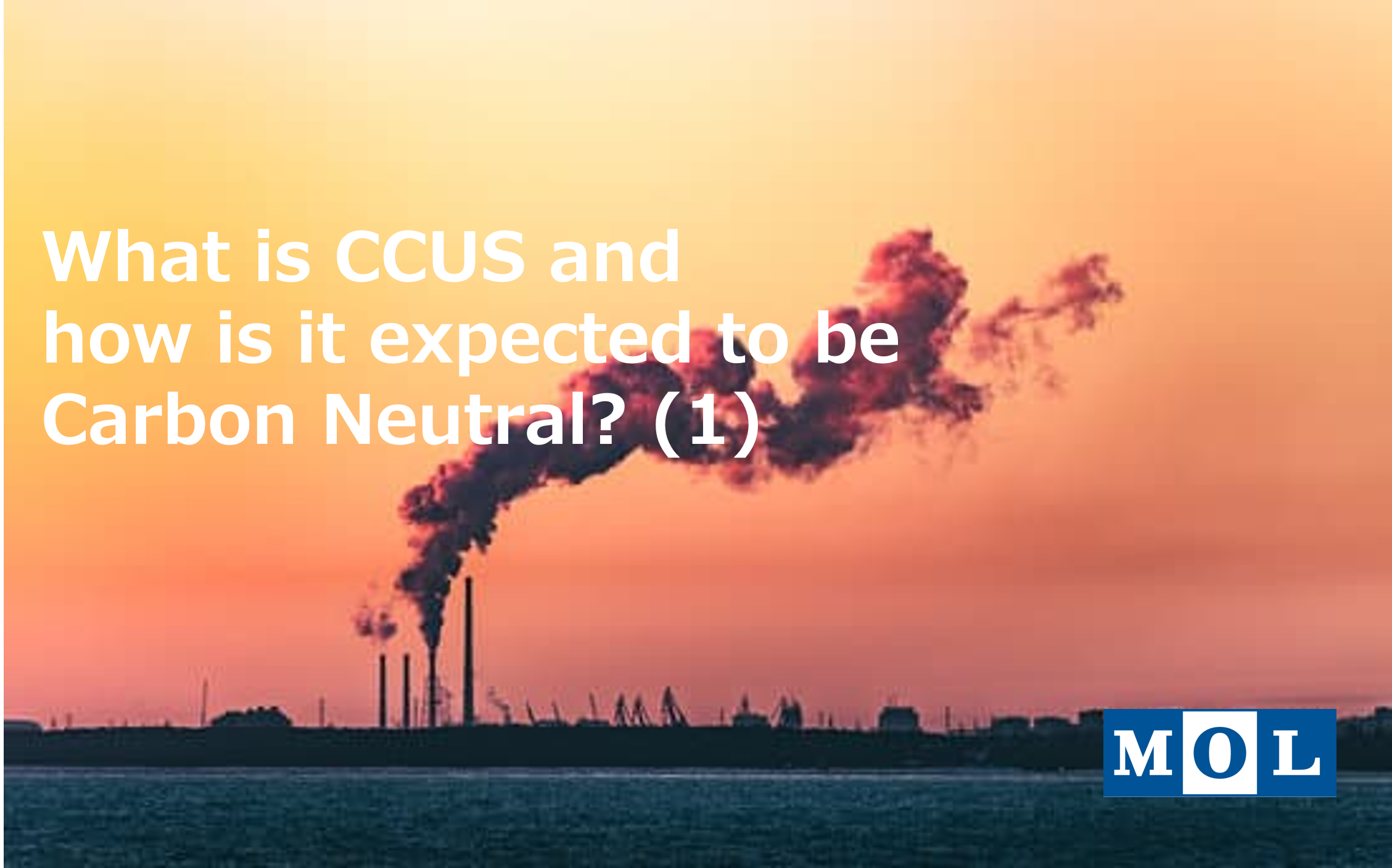

Writer:Ayu
Joined MOL in 2008. I’ve been in charge of operating oil tankers and bulk carriers for abt 7 years. And now I am currently involved in the operation of this site, in the marketing department.
I'm also in charge of managing MOL’s LinkedIn account. Please follow us! My favorite is K-Pop music :)
Recommended Articles
2022.07.05
- General Shipping
2021.04.13
- Energy
2023.12.19
- General Shipping
2021.08.07
- Eco Friendly
2025.03.18
- General Shipping
Latest Articles
2025.12.09
- Eco Friendly
- General Shipping
2025.12.03
- General Shipping
2025.11.20
- Energy
- General Shipping
